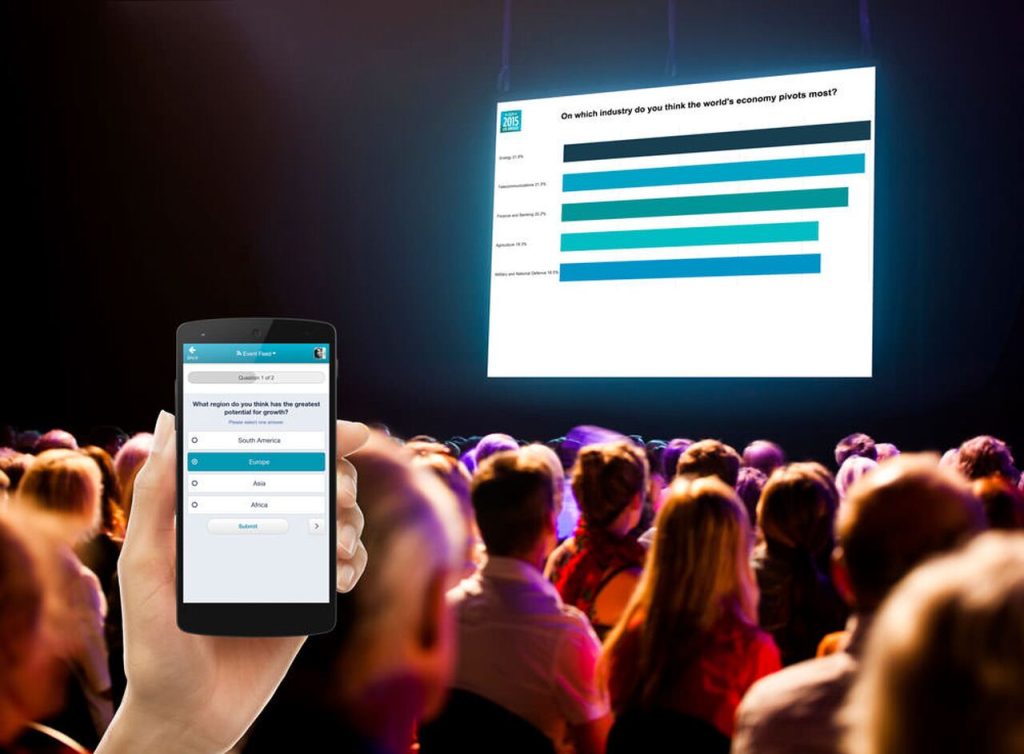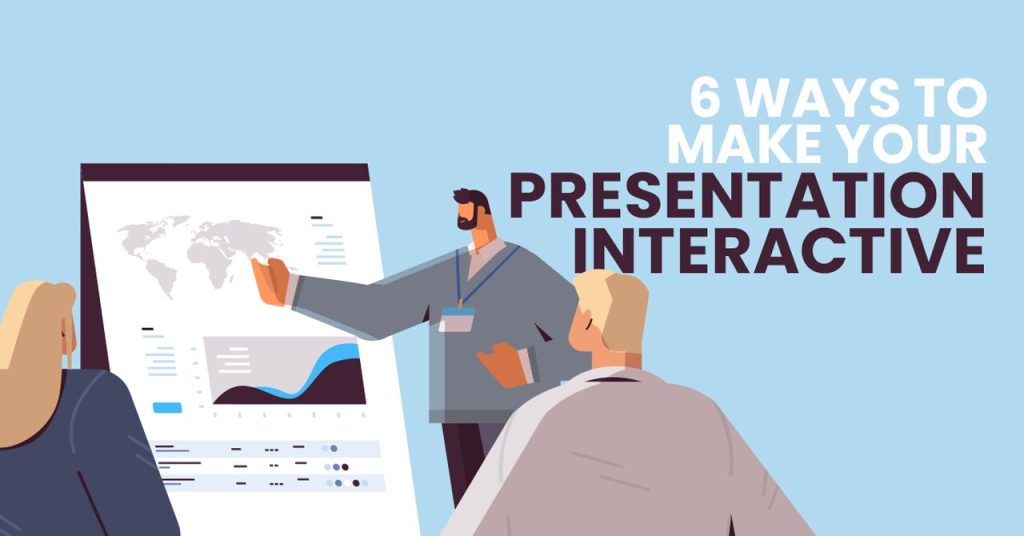It’s frustrating to pour your heart and soul into a presentation only to realise that no one is paying attention.
You find yourself speaking to a room full of blank faces.
Your audience is seemingly lost in their own thoughts or checking their phones.
This scenario is all too common.
But it doesn’t have to be your reality.
One effective way to turn things around is by making your presentation interactive!
By doing so, you can keep your audience engaged and ensure they’re also having fun listening to your message.
Let’s explore 6 powerful ways to turn your presentation into an interactive experience your audience won’t forget!
1. Start with a Thought-Provoking Poll
This approach not only gets your audience involved from the get-go.
It also gives you insight into their current knowledge or feelings about the topic.
You can then tailor your presentation to address their needs more effectively.
For example, say you’re giving a presentation on marketing trends.
Instead of diving straight into your slides. . .
Ask your audience a simple question related to your topic.
You could ask, “How many of you feel confident about the latest marketing trends?”
Use a live poll tool to display the results instantly.

2. Incorporate Storytelling with Audience Participation
Stories captivate, but interactive storytelling takes engagement to a new level.
Start a story related to your topic, then pause at a crucial moment.
Ask your audience to suggest what happens next.
For example. . .
You can say, “Our company was facing a major crisis. What do you think we did next?”
Choose a few responses and weave them into your narrative.
This creates a sense of co-creation and keeps everyone on their toes.
3. Use Live Demonstrations or Experiments
Demonstrations, especially when audience members are involved.
Make your content more relatable and memorable.
People are more likely to remember something they’ve seen in action rather than just heard about.
Let’s say you’re presenting a new sales technique.
Instead of just explaining it, invite a volunteer to come up and role-play a sales scenario with you.
Walk them through the technique step-by-step in front of the audience.

4. Create Small Group Discussions
Small group discussions allow for deeper engagement.
It gives everyone a chance to voice their opinions.
This can lead to valuable insights that you can incorporate into your presentation.
Ask your audience to break into small groups.
Give them a problem to solve or a question to discuss.
After a few minutes, have each group share their thoughts.
5. Gamify Your Presentation
Gamification adds an element of excitement to your presentation.
It taps into your audience’s natural desire to compete and win.
It makes them more attentive and involved.
You can turn any presentation into a game by creating a quiz with multiple-choice questions.
Or have the choices projected on stage and let them line up to which answer they think is correct.
Offer small prizes for correct answers to keep it competitive and fun.

6. Implement a “Choose Your Own Adventure” Approach
This approach offers your audience multiple paths or options throughout the presentation.
It allows them to select the direction of the discussion.
This turns your audience into active participants.
It personalises the experience based on their interests.
So, rather than following a fixed script.
Offer your audience options at key points.
Let them choose the next topic, case study, or example.
Actively Involve Your Audience So You Can Turn A One-Way Speech Into a Dynamic Conversation
An interactive presentation doesn’t just happen by accident.
It requires thoughtful planning and a deep understanding of your audience.
By incorporating these interactive techniques, you’ll not only make your presentations more engaging.
You’ll also be fostering a collaborative atmosphere.
Remember. . .
The goal is to create an environment where your audience isn’t just listening, but actively participating.


